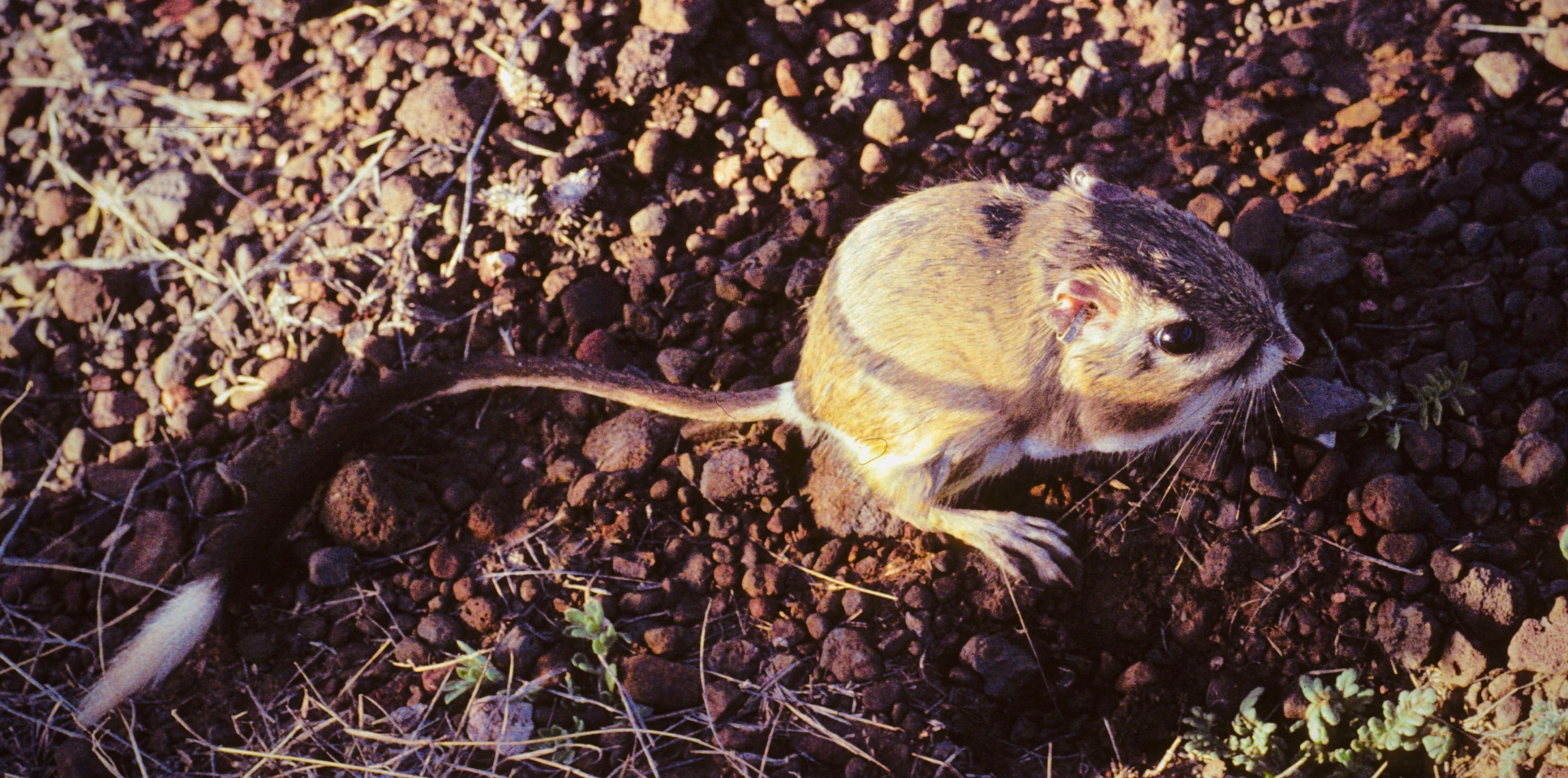Linking genomics and fitness
Determinants of fitness
Fitness can be measured as the number of offspring produced by an individual and is determined by an individual’s genetic makeup and the environment. For a population to remain stable, each generation of individuals must produce a sufficient number of offspring. This research will investigate the relative roles of individual genetic makeup and the environment in determining fitness for a population of banner-tailed kangaroo rats (Dipodomys spectabilis). This research will shed light on a fundamental question in evolutionary biology (how fitness is determined) while also informing conservation and population management strategies. Describing influences on individual fitness will allow for more robust predictions of long-term stability for populations threatened by environmental change or small population size.
Dipodomys spectabilis
The focal population for this study has been monitored since 1980 by Peter Waser and colleagues in southeastern Arizona (location indicated by D. spectabilis on species range map). An individual kangaroo rat typically occupies a single, large mound (1-3 meters in diameter) for the entirety of its adult lifetime. These mounds are used as protection from predators and the harsh abiotic conditions of the arid grasslands they inhabit, as well as for seed storage. Kangaroo rats defend the areas immediately surrounding their mounds and typically do not venture long distances from their mounds (i.e., < 250 m). From 1990-2007, approximately 98% of this population was trapped, tagged, weighed, and subsequently genotyped at 9 microsatellite loci, with genetic samples retained for future resequencing. This work supported the construction of a deep pedigree (up to 16 generations deep) and estimation of lifetime fitness (number of offspring that survived to maturity) for each individual.

Research objectives
The two main objectives of this research are to:
- Characterize and quantify the genomic and environmental effects contributing to variation in individual fitness
- Construct a model to explore how genetic, environmental, and population parameters interact to produce fitness phenotypes and determine long-term population stability

Reference genome
To facilitate our genomic analyses, we generated a new reference genome for the banner-tailed kangaroo rat (published in Genome Biology and Evolution). The assembly (published on NCBI) was built using long-read PacBio HiFi data and comprises 2,026 contigs totaling 2.8 Gb. Based on our comparative analyses, this genome is suitable for genomics studies across species in the genus Dipodomys.
